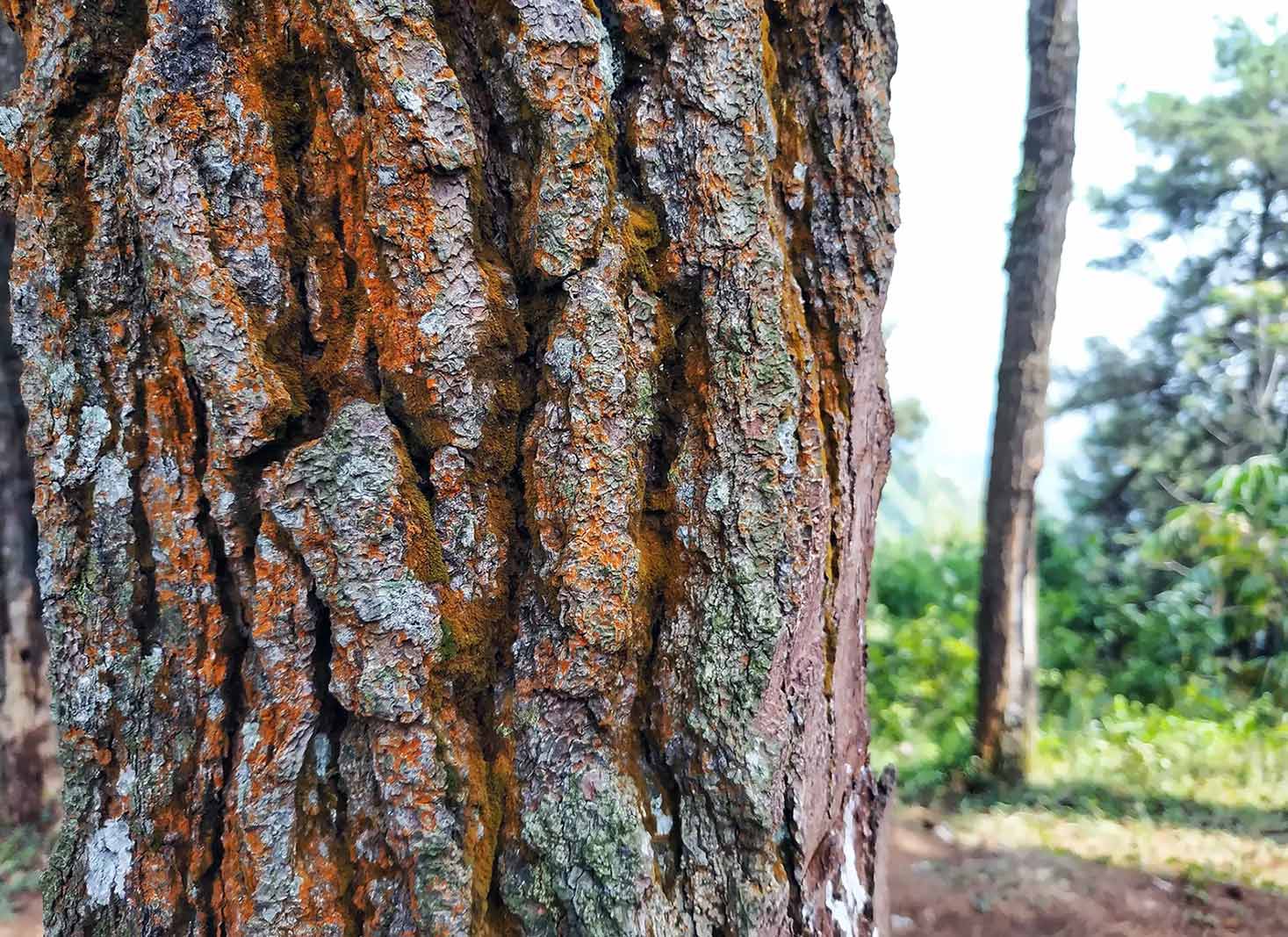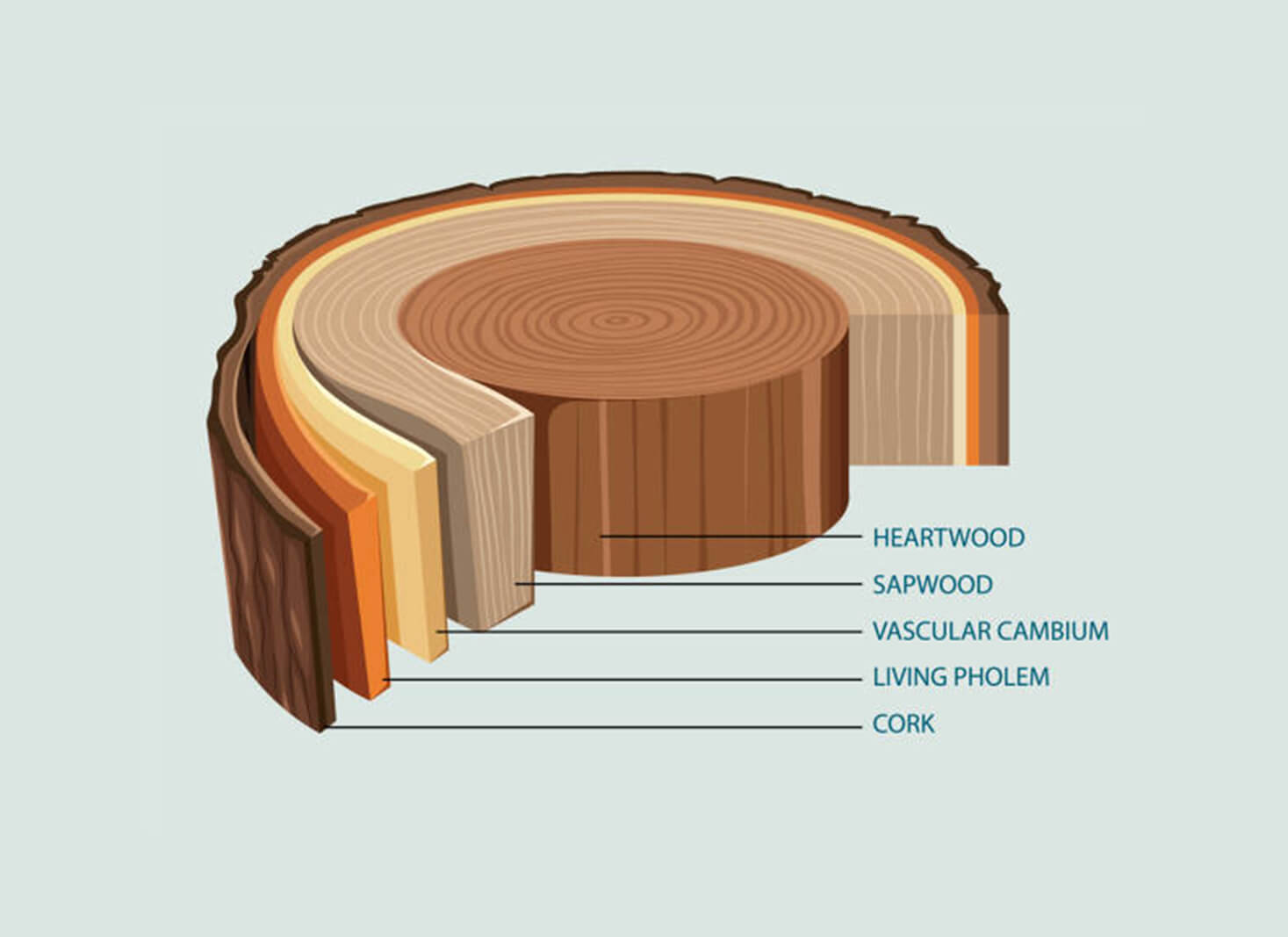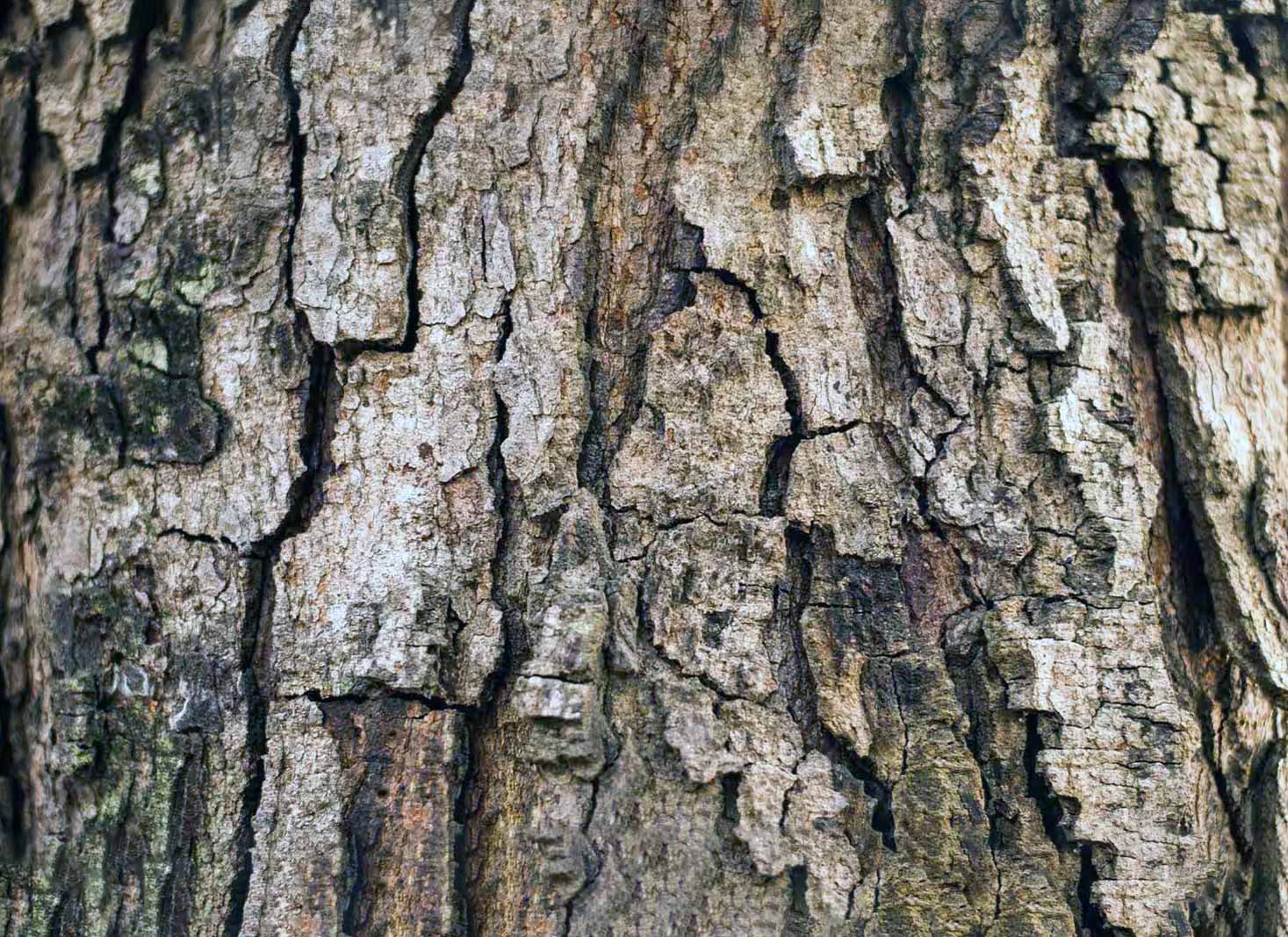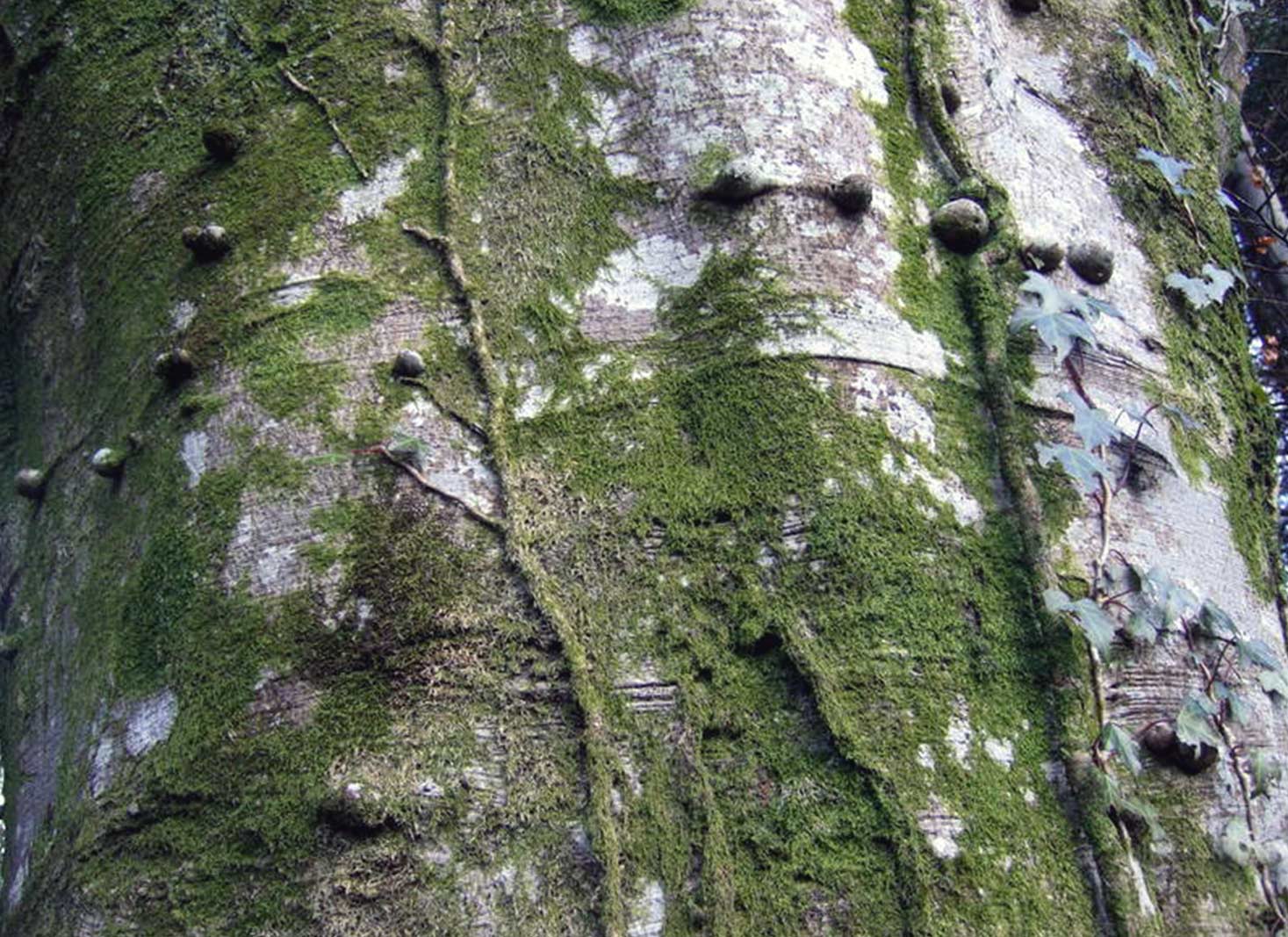Have you ever stopped to consider the importance of tree bark and asked yourself, “Why do trees have bark?”
Tree bark serves a protective function, defending against external threats and promoting tree survival in certain climates. Bark facilitates the transport of nutrients while contributing to secondary growth and water retention.
The bark is not just a rugged outer layer; it is vital to a tree’s survival, shielding it from harsh weather, pest attacks, and disease.
The protective functions of tree bark

Trees have evolved over millions of years, developing a tough outer layer called bark that serves as their primary line of defense.
The bark is a tree’s armor, shielding it from various environmental challenges, such as extreme temperatures, moisture, pests, and diseases.
Given the sheer number of many different tree species on our planet, it is no surprise that bark comes in a wide range of appearances and compositions.
Outer bark defense
The outer bark1 plays a crucial role in protecting trees from external threats. Acting as a physical barrier, it safeguards the tree from potential damage caused by humans, animals, and environmental conditions.
Moreover, the outer bark serves as a barrier to germs and fungi, which may cause illness.
This protective layer is particularly important for trees, as it allows them to thrive in various climates and withstand the myriad challenges they face throughout their lives.
Weather resistance
In addition to defending against living organisms, bark also contributes to a tree’s ability to withstand environmental factors such as extreme temperatures and moisture.
This is achieved by acting as a waterproof overcoat for the tree, preserving the dryness of the tree’s inner layers and shielding them from external elements.
Furthermore, bark restricts the quantity of water lost from the tree through evaporation, functioning as a shield from the atmosphere. By providing this level of protection, bark helps trees thrive in a variety of environments.
The nutrient transport system: inner bark and cambium layer

Beneath the protective outer layer of bark lies a complex nutrient transport system that plays a vital role in the growth and sustenance of trees.
This system consists of the inner bark and the cambium layer, which work together to transport nutrients and support the tree’s growth.
Inner bark (phloem)
The inner bark, or phloem, is responsible for transporting sugars and nutrients from the leaves to other areas of the tree.
This process is essential for the tree’s growth and overall health, as it ensures that all parts of the tree receive the necessary nutrients they need to thrive.
In addition to transporting nutrients, the inner bark also plays a role in protecting the tree from external threats. Its composition of secondary phloem helps create a barrier that defends the tree from potential harm.
Cambium layer
The cambium layer, located between the phloem and xylem layers of bark, is a layer of living tissue that generates new cells.
These new cells form more xylem on the inner side and more phloem on the outer side, ensuring a continuous supply of nutrient-transporting cells for the tree.
The cambium layer plays a crucial role in nutrient transport and structural support, helping to maintain the tree’s overall health and stability.
The diversity of tree bark among different species
With thousands of tree species across the globe, it is no surprise that there is a tremendous diversity of bark2 characteristics.
Each species exhibits a distinct appearance and purpose for its bark, which can range from smooth to rough in texture and from thin to thick in thickness.
This diversity not only contributes to the beauty and uniqueness of individual trees but also plays a role in their survival and adaptation to different environments.
Smooth vs. rough bark
Smooth bark often serves to repel climbing plants, thus protecting the tree from potential damage.
On the other hand, rough bark is better equipped to endure severe weather fluctuations, as it can absorb and deflect the force of strong winds and extreme temperatures.
Some tree species exhibit a combination of smooth and rough bark on their tree trunk, such as the basal stocking of distinctive tessellated rough bark with an abrupt transition to smooth bark on the upper trunk.
Thin vs. thick bark
Bark thickness varies among tree species, with some having thin, delicate bark and others having thick, tough bark.
The factors that affect bark thickness include species, genetic constitution, location, tree age, health, and size, among others.
Thin bark is more susceptible to damage from animals, insects, and weather, whereas thick bark is more resilient to these elements.
However, thick bark may also restrict the amount of water and nutrients that can be absorbed by the tree, highlighting the complex trade-offs that trees face in their quest for survival.
How bark influences tree growth
The various characteristics of bark play a significant role in influencing tree growth.
From the protective functions of the outer bark to the nutrient transport system facilitated by the inner bark and cambium layer, the bark is integral to a tree’s growth and development.
Secondary growth
Secondary growth refers to the growth of new tissues in the trunk and branches of a tree. Bark plays a crucial role in this process, allowing trees to expand in diameter as they grow.
This expansion is facilitated by the cambium layer, which produces new phloem and xylem cells for nutrient transport and structural support.
By supporting secondary growth, bark enables trees to grow larger and stronger, better equipping them to withstand environmental challenges and thrive in their natural habitats.
Spongy bark and water retention
In addition to its role in nutrient transport and secondary growth, some types of bark also function as a sponge, absorbing and retaining water for the tree.
Spongy bark consists of dead cells filled with air, making it lightweight and effective at retaining water. By holding onto water, spongy bark helps trees maintain their hydration levels, especially during periods of drought or water scarcity.
This water retention capability further highlights the critical role that bark plays in the survival and growth of trees.
The role of dead cells in bark formation

Dead cells play a significant role in the formation and function of tree bark.
These cells contribute to various aspects of bark, from shedding and renewal processes to the creation of an unappetizing outer layer that deters animals and insects from consuming it.
Shedding and renewal
Trees naturally shed dead bark cells and replace them with new cells, allowing for continuous growth and protection.
This shedding and renewal process is essential for the tree’s defense against the external environment, as it helps prevent moisture from entering during rainfall and safeguards the tree from damage caused by insects and fungi.
The constant shedding and renewal of bark ensures that trees maintain a strong, protective barrier against the various threats they face throughout their lives.
The unappetizing layer
The outer layer of bark is often inedible and unpalatable, discouraging animals and insects from consuming it.
This unappetizing layer serves as an additional line of defense for trees, as it helps protect them from potential harm caused by herbivores and insect infestations.
By creating an attractive and indigestible outer layer, trees can better ensure their survival and continued growth in the face of various challenges.
Notable bark features in specific tree species

While we have explored the general functions and characteristics of tree bark, it is worth noting that certain tree species possess distinct and unique bark features.
These features not only contribute to the aesthetic appeal of individual trees but also serve specific functions that support the survival and growth of these species.
Beech tree bark
Beech trees are known for their smooth, thin bark that is easily damaged but provides a unique aesthetic. The silvery-gray texture and slight horizontal etchings of beech tree bark make it easily identifiable, even in winter.
Although its thin and smooth nature renders it susceptible to damage from animals, insects, and weather, the bark of beech trees remains an essential feature, offering both protection and aesthetics to this beautiful species.
Other unique bark types
Apart from beech trees, other tree species also exhibit distinctive bark features, such as peeling or colorful bark.
These unique bark characteristics can serve various functions, from protecting the tree against specific environmental challenges to providing aesthetic appeal in a forest landscape.
By appreciating the diversity of bark features among different tree species, we gain a deeper understanding of the incredible adaptations that trees have developed over millions of years to survive and thrive in their environments.
FAQ’s
What is bark and its importance?
Bark is the protective layer of a tree, helping to keep out moisture in wet conditions, preventing moisture loss in dry conditions, insulating against cold and heat, and warding off insect predators.
Bark plays an important role in the water cycle as it acts like a sponge during storms.
Can a tree survive without bark?
Removing bark in a ring around the trunk, known as girdling, will always lead to the death of the tree; without sufficient bark, a tree’s survival is unlikely.
The cambium produces new wood and bark, while the flower transports materials from the crown to the roots.
The dead phloem tissue then becomes the tree’s bark.
Do trees breathe through their bark?
Yes, trees do breathe through their bark by taking in oxygen and releasing carbon dioxide via stem pores called lenticels, similar to stomata on leaves. This is a form of respiration which helps the tree to survive.
What is the role of the cambium layer in tree growth?
The cambium layer plays an essential role in tree growth, producing new phloem and xylem cells to aid in nutrient transport and structural support.
- Tree Plantation, (2017) Understanding the Important Functions of Tree Bark. <https://treeplantation.com/tree-bark.html> Accessed: 20-03-2024.
- Daniel Allgood, (2023) Why Do Trees Have Different Types of Bark? <https://extension.psu.edu/why-do-trees-have-different-types-of-bark> Accessed: 20-03-2024.



